On June 12, 2019, the Alex and Marie Manoogian Museum and Richard Manoogian, Chairman of the Board, Armenian Apostolic Society, hosted a special event at the St. John Armenian Church Cultural Hall - featuring Dr. Helen Evans, curator of the Armenia! exhibit at the Metropolitan Museum of Art, New York. This article provides highlights from the program.
Elizabeth Brazilian, a member of the organizing committee for the event, was M.C. for the evening and identified the committee members: "Lucy Ardash [Director of the Manoogian Museum], Edmond Azadian [Advisor to the Museum, author, and journalist], and Alice Nigoghosian [public relations and publishing consultant]; Mike Savitski [graphic designer and photographer]; and Steven Volk [videographer]."
The Very Rev. Fr. Aren Jebejian welcomed everyone to the "The Holy Land"—recalling this was first said to him by the late Ms. Dyana Kezelian of blessed memory—when he first visited the Manoogian School. "Over the past three years I have come to know the true value and the legacy we have inherited in a place that we call 'The Holy Land'. Other than the Mother See of Holy Etchmiadzin in our ancestral homeland, it is going to be difficult to find a sanctuary, a pre-K to 12 school, and an Armenian museum in one complex." The St. John Armenian Church complex includes the A.G.B.U. Alex & Marie Manoogian School, the Edward and Helen Mardigian Library, the Veterans Recreation Building, and the Alex and Marie Manoogian Museum.
Brazilian acknowledged the presence of special guests, including "Detroit Institute of Arts Director Salvador Salort-Pons and his wife Alex May, Eugene A. Gargaro, Jr. [Chairman of the Board, Detroit Institute of Arts], Dr. Richard Marburger [President of the A.G.B.U. Manoogian School Board], members of the School Board, and the 2019 Fall Senior Class. The Manoogian School will celebrate its 50th Anniversary this fall."
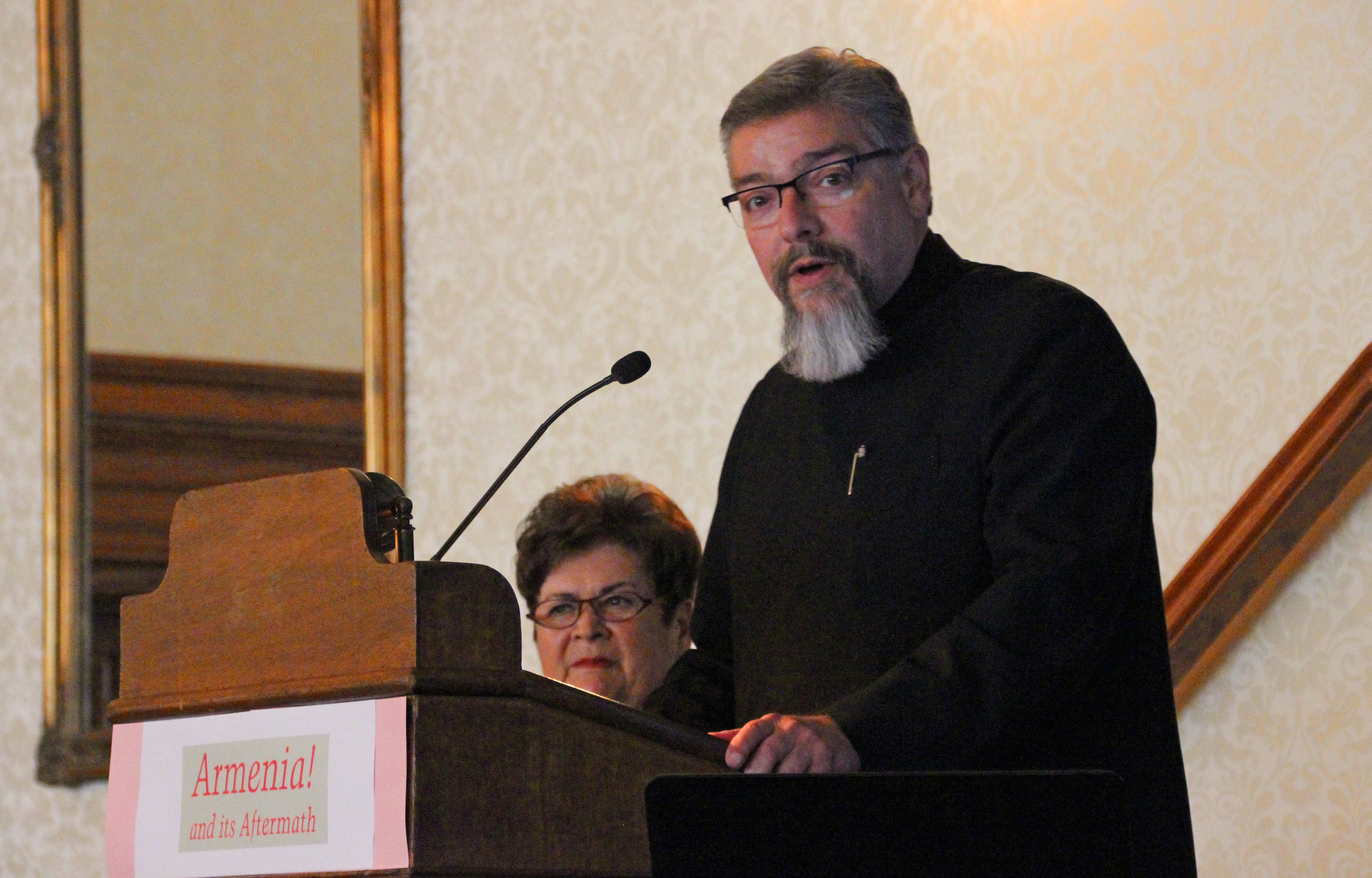
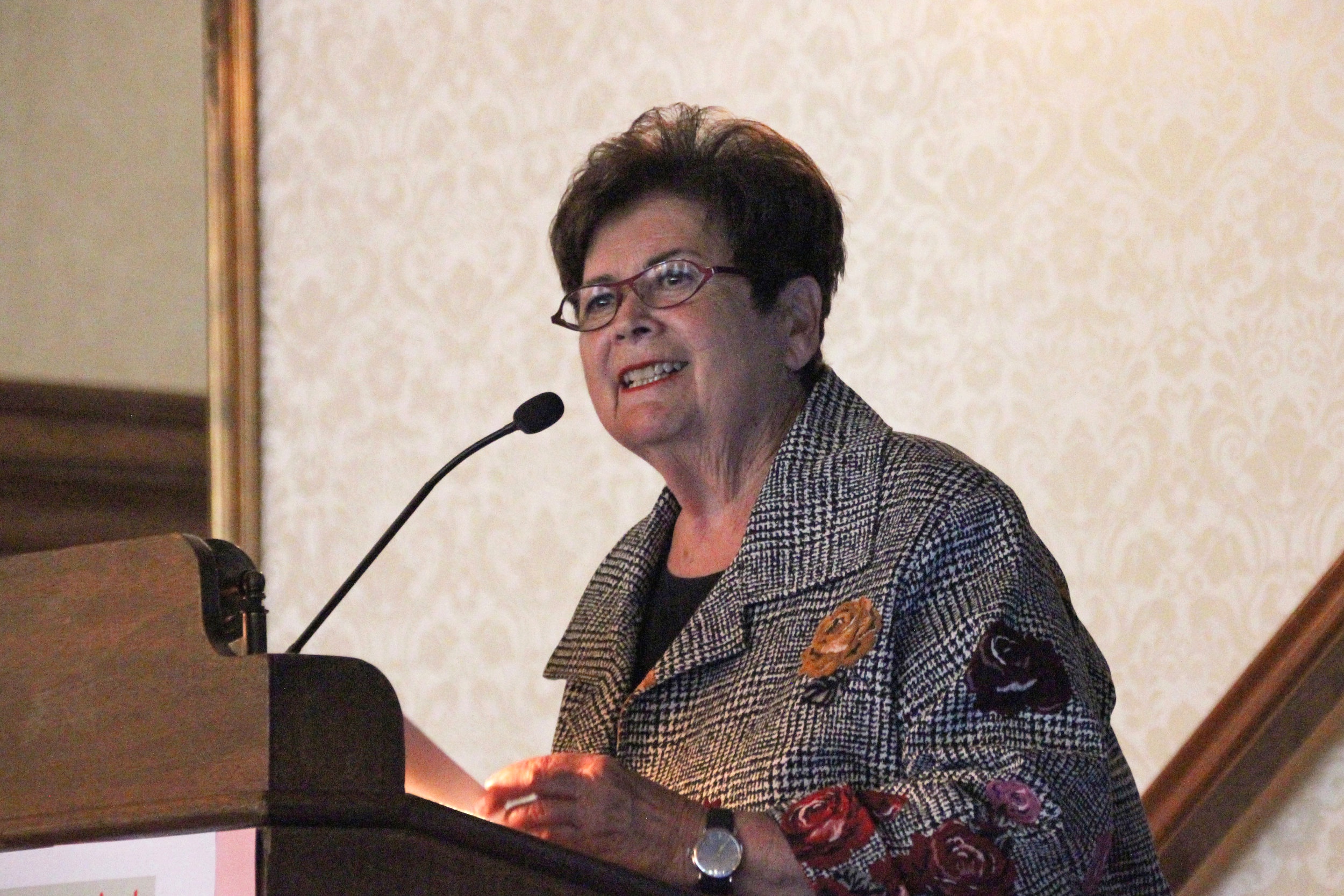
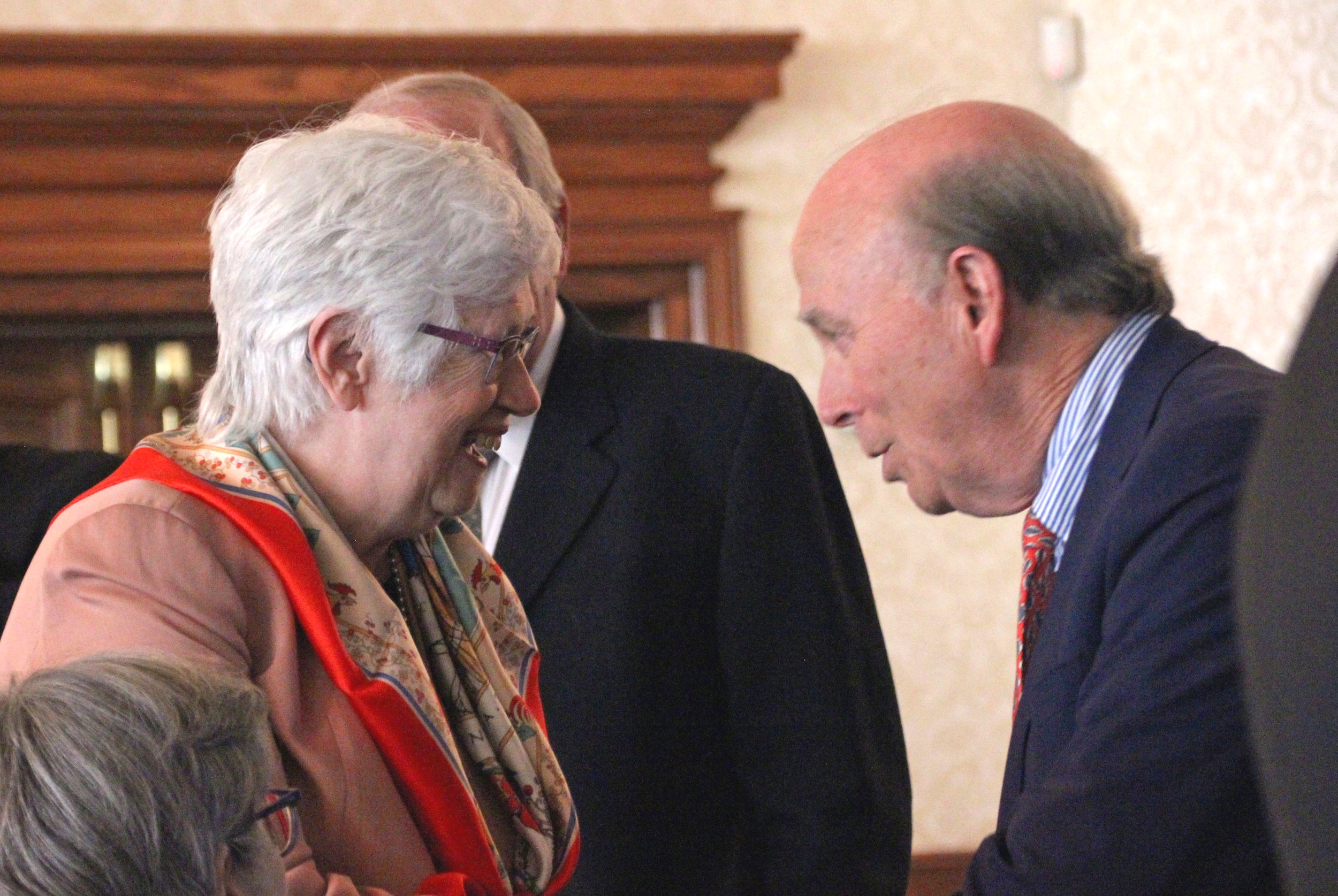
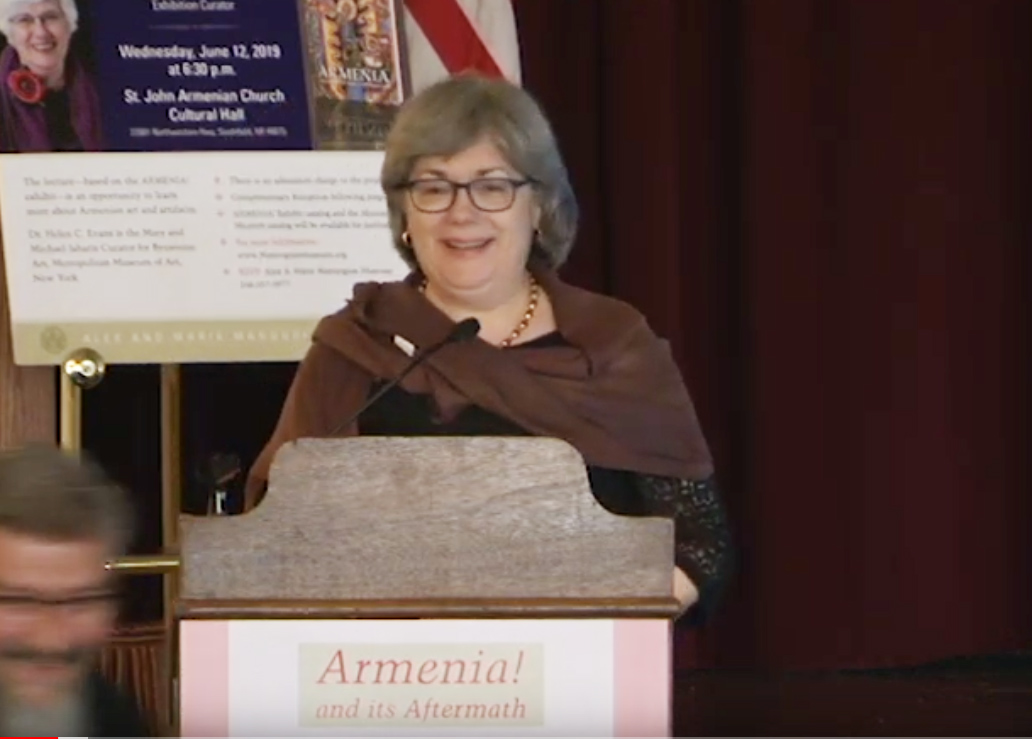
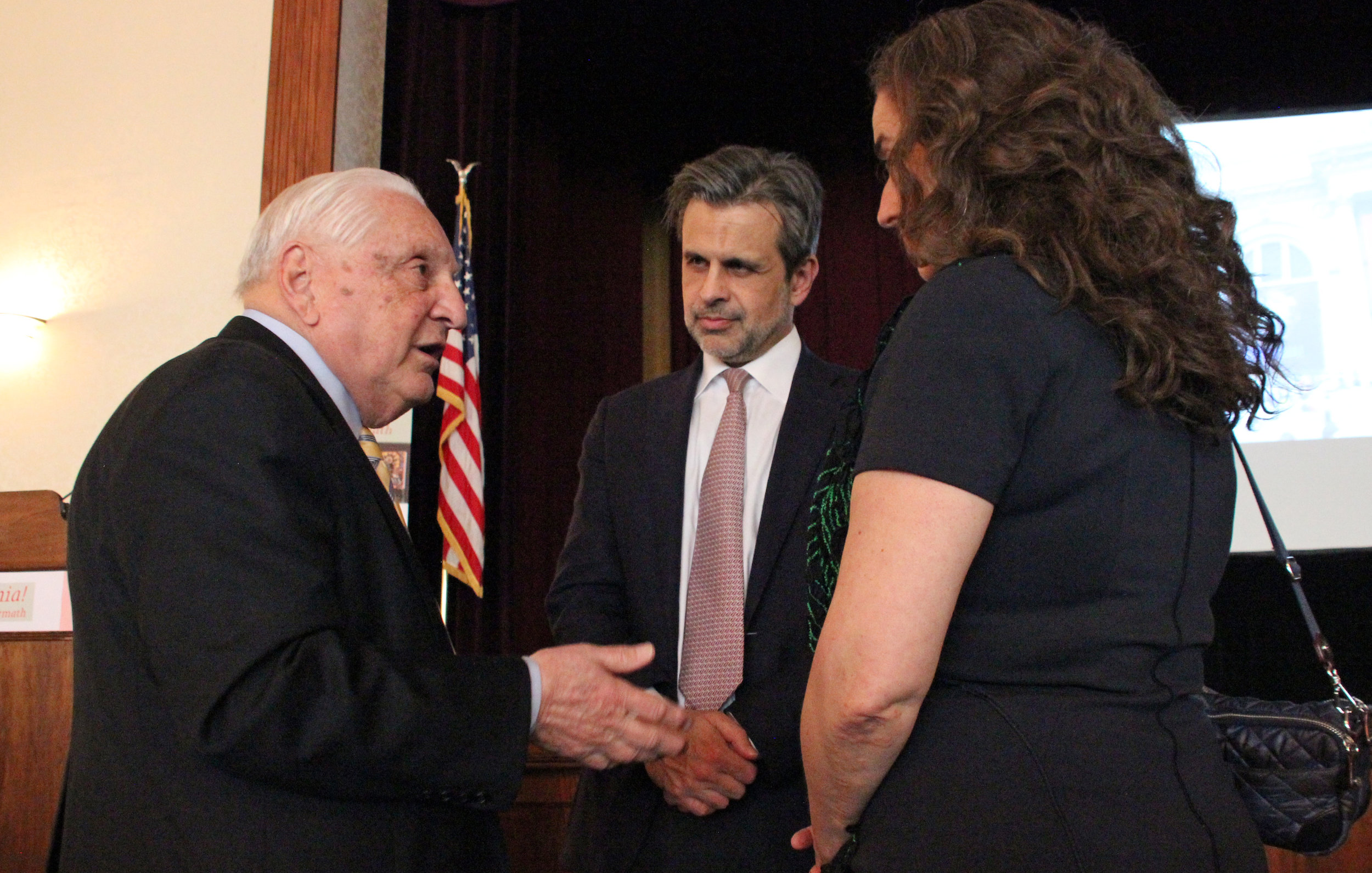
Brazilian then introduced Dr. Sylvie Merian from the Morgan Library and Museum, and a contributor to the exhibit catalog. "She received her PhD in Armenian Studies from Columbia University in New York. She has published and lectured on Armenian codicology, book bindings, manuscript illumination, and the history of the book. She also contributed to the Manoogian Museum book—A Legacy of Armenian Treasures."
Dr. Merian read a specially written colophon in honor of Dr. Evans and also introduced her. From the colophon: "This so-called Colophon was written in the year of the Armenians, 1468, and the year of our Lord 2019, by the miserable and untalented scribe Sylvie, to introduce and honor Dr. Helen Evans, whose tireless efforts . . . innate intelligence . . . profound knowledge . . . enabled her to create the spectacular exhibition, Armenia! at that great temple of world art and culture, the Metropolitan Museum of Art in New York. Dr. Evans is well-known in the world of art history, museums, and Armenian studies as she has produced many spectacular exhibitions. She has written countless articles and books, lectured innumerable times worldwide. Her impressive CV is 22 pages long! The exhibition received countless accolades. She even received highest awards—His Holiness Karekin II, Catholicos of All Armenians presented Dr. Evans with the 'Order of Saint Sahak-St. Mesrop Award' at the opening of the exhibition Armenia! and the Prelacy of the Great House of Cilicia presented her with the 'Mesrob Mashtots and Queen Zabel Award' and also with the 'Spirit of Armenia Award' for Armenia! Dr. Evans received the 2019 'Friend of the Armenians Award' at the Diocesan Assembly in May. Dr. Helen Evans will speak to us on Armenia! The Aftermath."
Dr. Evans began her talk by referring to "a MET survey taken during the event which indicated that 93% of those people surveyed said that they learned so much from the art and from the labels. So our goal to make the world know of the importance of Armenian art and culture is at least to a degree started.
"We opened the show with Gregory, the Illuminator, the converter of the Armenians as a people to Christianity, then the Middle Ages, and merchants and traders. One way we can tell how really impressive you [Armenians] were—in Amsterdam in 1695 one of the popular luxury goods was gigantic maps of the world in the language of the people who are rich enough to pay for them. And one of the languages those maps are published in is Armenian. There is a world map that looks like everybody else's world map, but every word on it is in Armenian and it's altogether up to date including the fact that California is an island!
"Three of the works came from the Manoogian Museum—a hexagonal tile and the large ceramic egg [mid-to late 18th century]. Armenians were important at the ceramic manufacturing center of Kütaya by 1501. The third work came to be one of my favorite works in the entire exhibition is the reliquary container and the hand relic [from the eighth century] of St. Abulmuse. People mentioned that reliquaries were most meaningful to them . . . what I was trying to do in this gallery was to give people a sense of the Church in which we played liturgical music and then the objects that would fit within the Church. The music which came out from around the photographs was described as 'incredibly moving' by a number of people in their survey of the show. "
Reliquary container and the hand relic of St. Abulmuse.
As part of Dr. Evans commentary about the Khatchkar [cross-stone] in the exhibit, she mentioned that "when the Armenian government decided to gift one to the United Nations, that Archbishop Barsamian made a special trip to Armenia to help select a Khatchkar." Dr. Evans spoke at the special ceremony at the U.N. when the Khatchkar was officially blessed and installed at the U.N. Headquarters in New York on April 17, 2015.
"So I've come to the end of my talk and I didn't have any fantastic conclusion for you, but I wanted to make a point that matters a great deal to me and to people like Sylvie—that you [Armenians] are relevant in many ways that are not yet fully understood.
"There is so much to learn about our medium and so many people were moved by the show and what they learned. I would encourage a lot more scholarship, a lot more support, a lot more Armenian exhibitions and a lot more supportive Armenian objects going into museums so that people can know about your art and culture. I think that as a non-Armenian it is a great honor to be able to study—what for most of you in this room is your own historical background. I thank you for having me here today to tell you what we hope we've done for it with our media."
Brazilian thanked Dr. Evans for a very meaningful presentation. "It gives me great pleasure to introduce our host for this evening. Please join me in welcoming the pillar of generosity and grace who continually honors the memory of his parents—Alex and Marie Manoogian—and a passionate supporter of the arts, Chairman of the Board of the Armenian Apostolic Society, Richard Manoogian."
Richard Manoogian, after acknowledging the Reverend Clergy, "Briefly, Dr. Evans, in all my years I've never had to follow a speaker that affected all of us so much in our hearts. My father, Alex, believed that to inspire pride and respect among the next generation of those of Armenian heritage, they must be exposed to the best of their history and traditions. What can inspire the next generation and all generations for that matter is to read at the main entrance of New York's Metropolitan Museum of Art—the word 'Armenia!'on the facade of the recent landmark exhibition. . . . Many thousands of Armenians and non-Armenians were treated to the marvels of Armenian medieval art on beautiful display at the MET. Despite many adversities in history, the creative impulse of the Armenian people has always been active. As a consequence of the sad destiny of the Armenians, many manuscripts and artifacts have been scattered around the world, making it a daunting task to build a museum or to organize even a single exhibition.
"That is why it was a painstaking challenge and endeavor to venture into the organization of the magnificent MET display, bringing together the resources of many museums and monasteries in Armenia, Lebanon, Jerusalem, Venice, and the United States. This beautiful exhibition entitled Armenia! was planned, developed and executed by a learned scholar, our guest speaker today—Dr. Helen Evans—and her colleagues.
"It takes thoughtful and sensitive diplomatic skills to convince the directors of leading institutions to loan their valuable artifacts to other museums, no matter how reputable those museums may be. Then it takes the knowledge of an academic coupled with an artistic taste to give it a coherent face, an identity to the exhibition. We are very proud that the Alex & Marie Manoogian Museum participated in the exhibition at the MET by loaning three significant items from our collection. This was not the only occasion when Dr. Evans was involved in highlighting Armenian medieval art and history as a major scholar in Byzantine studies.
"To perpetuate the impact of the exhibition and to extend the message for posterity, Dr. Evans has compiled a magnificent catalog with the signature impeccability of the Metropolitan Museum.
"We are privileged that she graciously accepted our invitation to afford us this evening an opportunity to offer her our own share of gratitude for elevating and placing the Armenian cultural heritage on so visible and revered a venue as the Metropolitan Museum of Art in New York.
"On this occasion, I have the honor to present to you an Award as a memento to remind you of our Museum and the Greater Detroit Armenian community. It reads as follows:"
A Special Honorary Award to
Dr. Helen C. Evans
Curator Extraordinaire
The Metropolitan Museum of Art, New York
In Recognition for Her Life's Work to
Preserve - Protect - Disseminate Knowledge
about the
Heritage and Culture of the Armenian People
for the World at Large
Presented Wednesday, June 12th, 2019
by the
Alex and Marie Manoogian Museum
Southfield, Michigan
The presentation was greeted by a standing ovation of all present. Brazilian thanked Richard Manoogian for hosting this spectacular evening and stated "This presentation was filmed and will be available for viewing on our website—manoogianmuseum.org. Check our website for upcoming events, activities, and articles."
Prior to blessing the food for the reception, the Very Rev. Fr. Aren Jebejian addressed Dr. Evans:
"Everything you said in your presentation was 100% true except for the fact that 'you are not Armenian'. YOU are Armenian by choice. We claim you, you are ours. When I first walked in, you came up to me and gave me a kiss on both cheeks. YOU are Armenian!"
All the guests were treated to a complimentary reception that included Armenian wine and Armenian hors d'oeuvres.
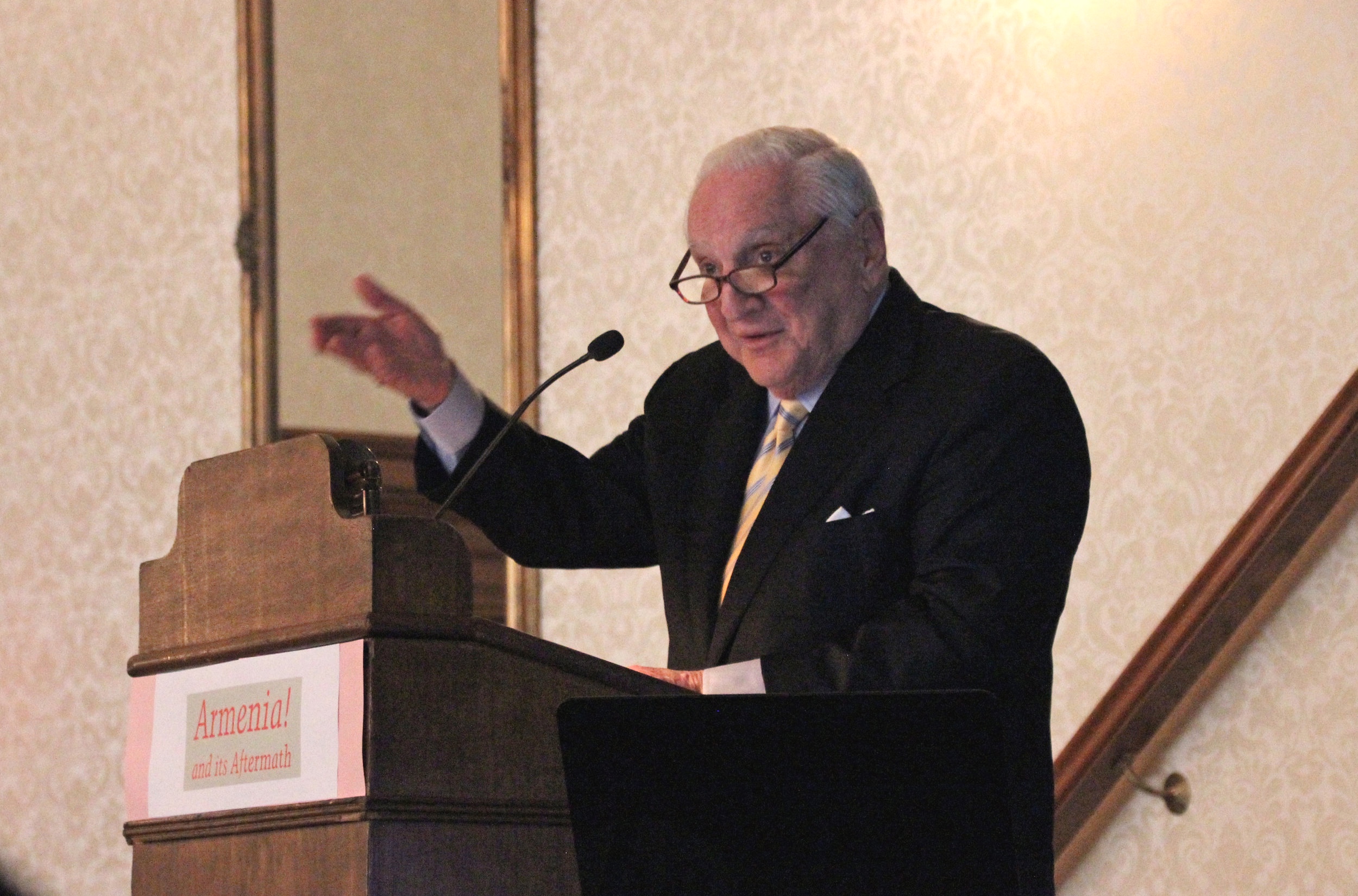
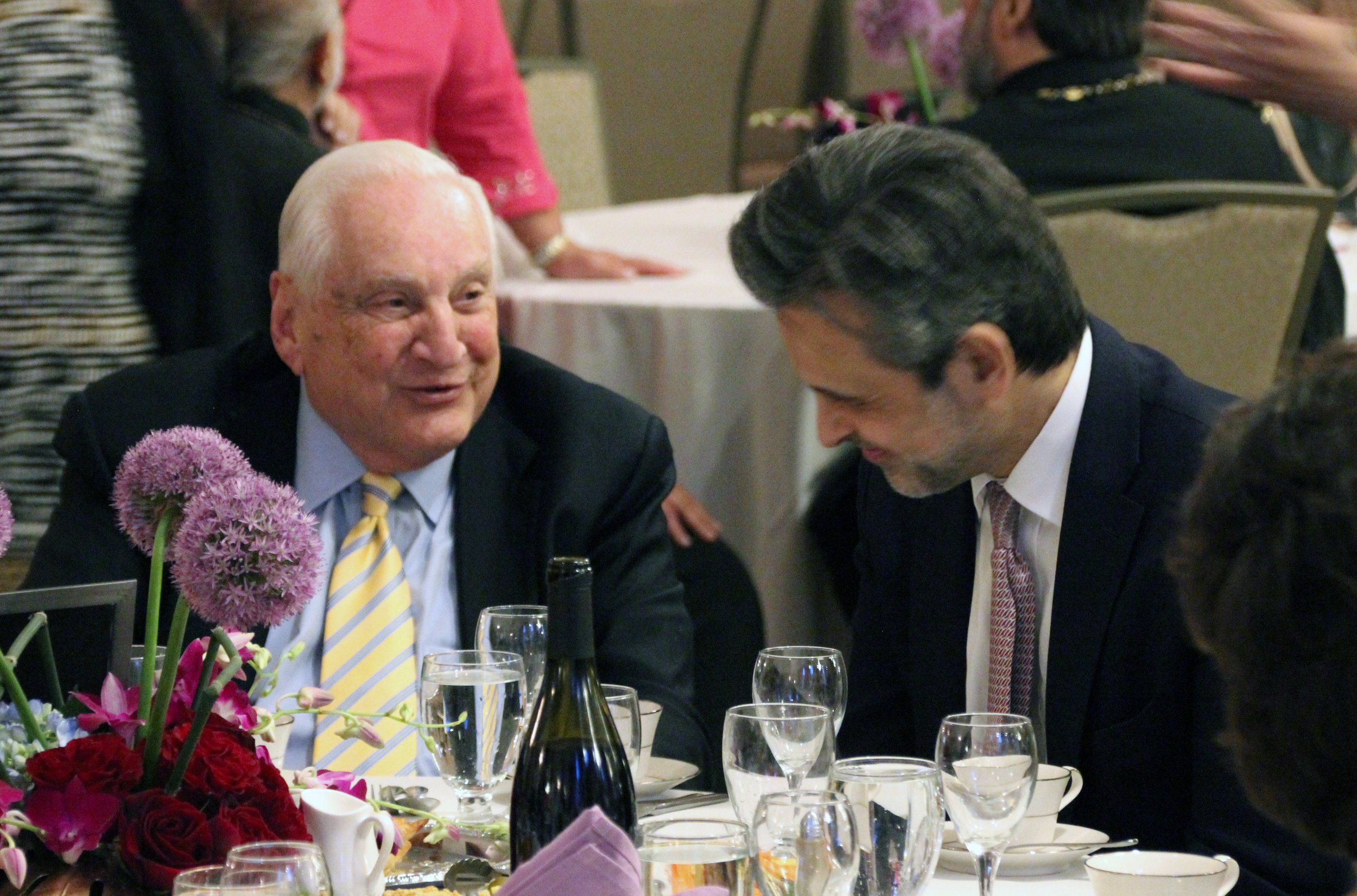
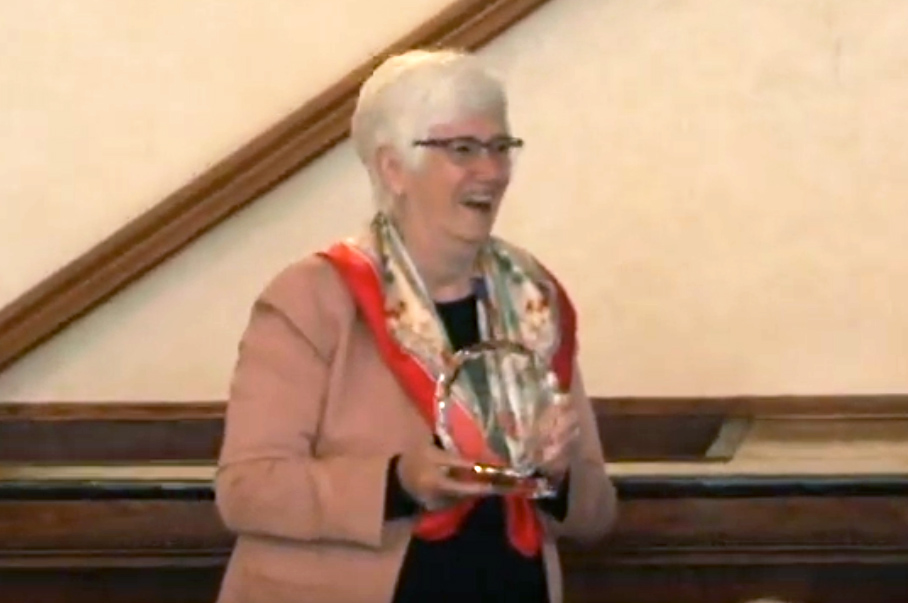
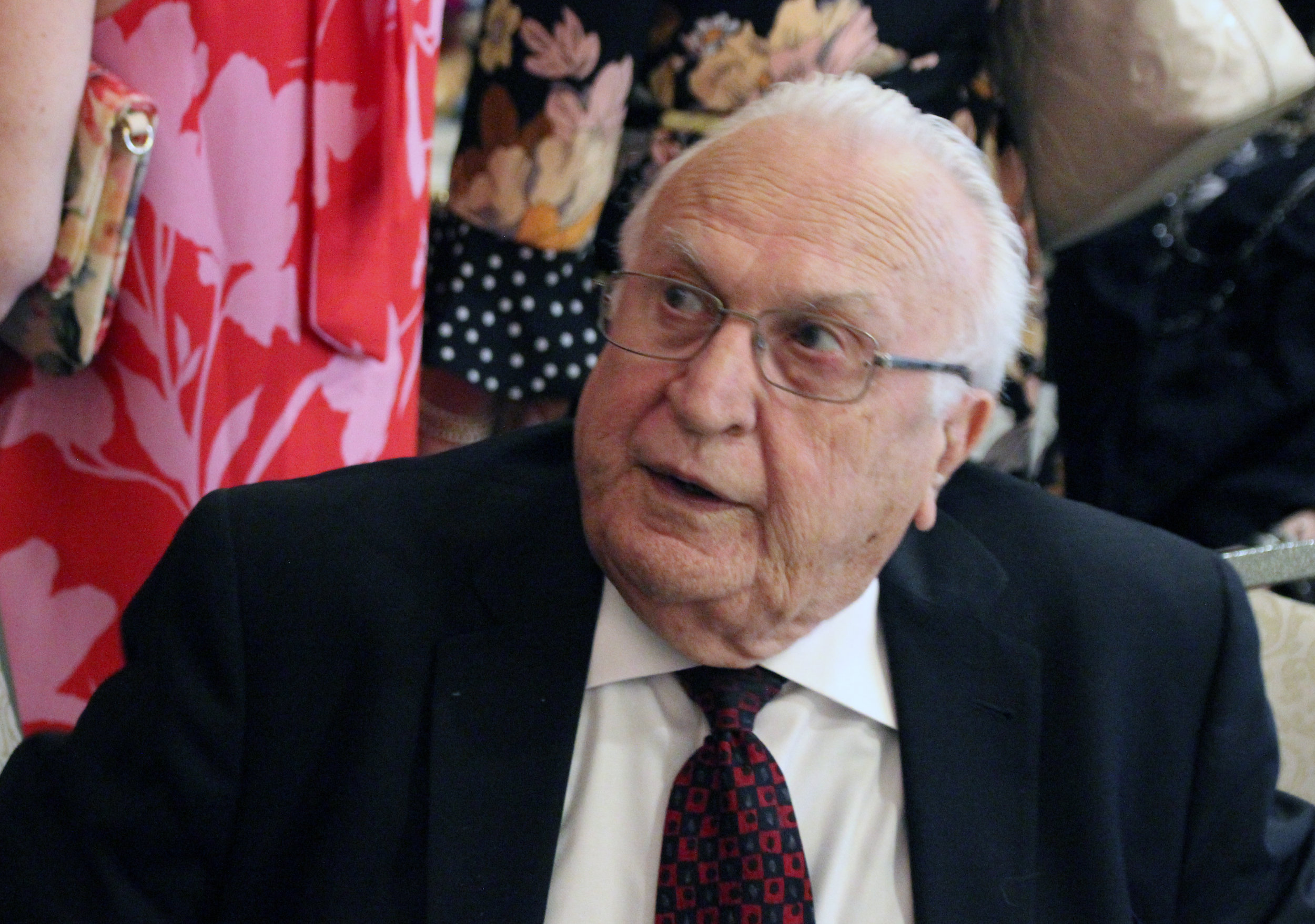

The Armenian Mirror-Spectator published a version of this story in its June 27, 2019 internet issue; and its printed version was published on June 29, 2019.
Article by Alice Nigoghosian
Publishing Consultant to the
Alex & Marie Manoogian Museum
June 19, 2019



